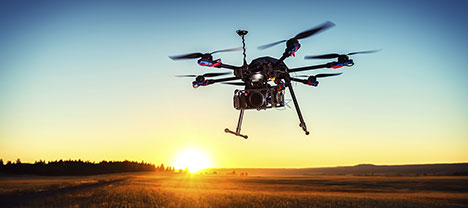
May 11, 2017
FAA Administrator Michael Huerta, recently speaking with the FAA Drone Advisory Committee (DAC), said he had “a very clear sense of what existing FAA authorities are and the processes are to enforce them.” However, he indicated he was not as clear on what aspects of unmanned aircraft systems (UAS) operations state and local and governments might desire to regulate, and he wanted to continue the dialogue with those entities.
NBAA is concerned that the FAA may be open to ceding any of its authority over airspace and aviation safety to local, state and regional organizations interested in regulating small drone operations, said Heidi Williams, NBAA’s director of air traffic services and infrastructure.
“The possibility of local, state or regional entities developing independent policies and procedures raises many concerns,” said Williams. “It is unclear how a manned or unmanned aircraft operator would keep track of jurisdictional boundaries or the unlimited number of rules if local or regional entities are permitted to develop their own airspace regulations.
“Requiring operators to understand and operate under a broad array of new policies or regulations is asking the impossible,” she added.
Current federal law does not allow state or local entities to regulate airspace or aviation safety, but some local and regional entities want to exercise more direct authority over low-altitude small drone operations.
Other entities have attempted to supersede the FAA’s authority over airspace and aviation safety. For example, the National Oceanic and Atmospheric Administration promulgated rules restricting overflight of marine areas in the Pacific Northwest, and instituted fines for aircraft flying at specified altitudes. Not only were the rules unknown to most pilots until notices were added to aeronautical charts, but there is no burden of proof – the pilot is considered guilty until proven innocent.
“The administrator has yet to say the FAA will retain complete authority and oversight over the national airspace system and not cede it to local or regional entities,” said Williams. “We want the agency to commit to retaining that authority.
“This is a prime example of why NBAA is represented on the FAA’s Drone Advisory Subcommittee,” she said. “We need to continue to protect the vital interests of NBAA’s membership in the national airspace system.”
NBAA personnel have participated in UAS working groups for 10 years, including participation through RTCA. The association has also published an expansive online resource covering UAS industry developments of importance to the business aviation community.
View NBAA’s UAS resources.


 International Business Aviation Council Ltd.
International Business Aviation Council Ltd.